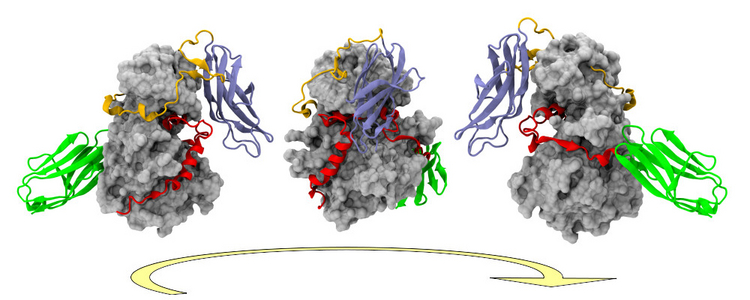
Research Activities
Our laboratory aims to understand how the structure of biomolecules – particularly proteins – determines their biological function in the cell. For this, we elucidate the three-dimensional structure of biomolecules applying the X-ray crystallography technique. 3D models so obtained permit analysing the physico-chemical, topographical and mechanistic principles of molecular function. We perform all the steps in this research, ranging from molecular biology and biochemical procedures to the X-ray diffraction of samples and the graphical manipulation of computational models. Based on the molecular knowledge acquired, we then go further to engineer molecular chimeras with new synthetic properties. The work is complemented with various other bioinformatics and biophysical approaches.
Biologically, we study how molecules sense and respond to mechanical signals in the cell. In particular, we investigate processes taking place in muscle, as this tissue exhibits exceptional plasticity, undergoing rebuilding upon mechanical stimulation and rapid atrophy when disused. The proteins under study in our lab are muscle-specific elastic filaments of the titin family, their cytoskeletal kinase domains and their associated proteostatic factors (e.g. ubiquitin ligases). Ultimately, we seek to understand how these molecules react to stretch/compression processes in the myofibril (molecular loading) and what the consequences of their conformational changes are in terms of intermolecular communication and catalysis in the cell.
Given that muscle dysfunction is a major health burden of modern societies, our work is of relevance to human health and health economics. Cardiomyopathies alone affect >23M people world-wide and skeletal muscle loss is invariably associated with chronic diseases such as diabetes, AIDS and cancer as well as immobilized patients and ageing. Such chronic muscle atrophy causes morbidity and is a major cause of disability in the population. Various proteins under study in our laboratory are known to be linked to cardiac and skeletal myopathies, so that results from on-going studies could ultimately aid the diagnostic, prognosis and treatment of muscle disease.
